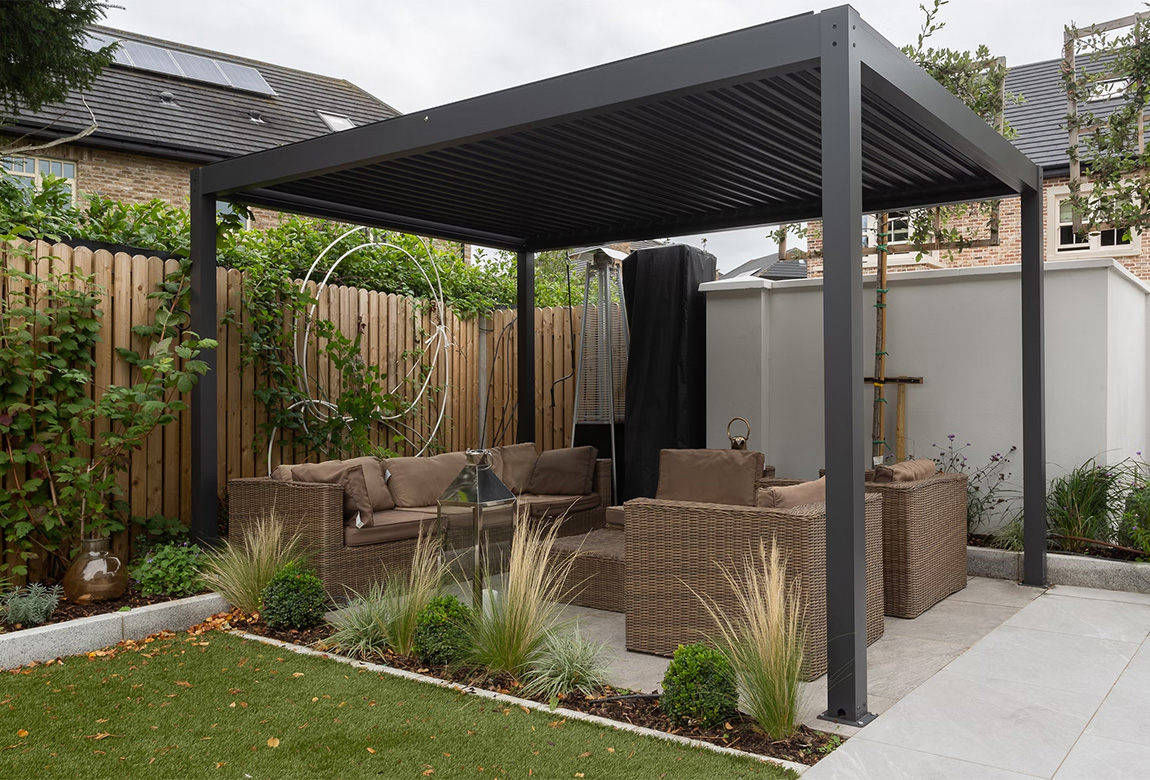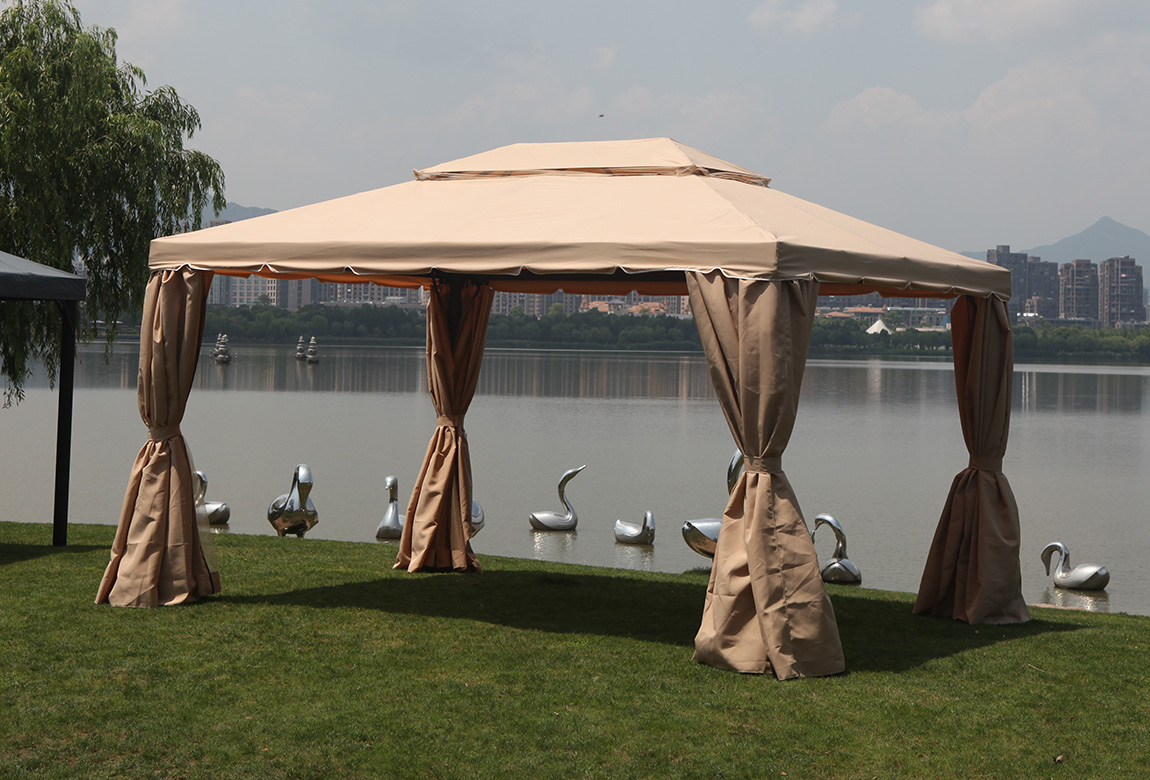What’s the Difference Between a Pergola and a Gazebo?
When designing your backyard or planning outdoor spaces for a community or park, it’s easy to mix up a pergola and a gazebo. Although both structures are popular, they serve different purposes and can dramatically affect the feel and function of your outdoor area. Knowing the differences will help you choose the perfect option for your space. Let’s explore how a pergola and a gazebo differ.

Pergola: Open, Breezy, and Versatile
A pergola is an open-air structure with vertical posts supporting horizontal beams or a lattice-style roof. Unlike a gazebo, it doesn’t have walls or a solid roof. Instead, the roof consists of beams that create a grid, allowing sunlight to filter through. It provides some shade on sunny days and offers light shelter from rain.
Common Uses of a Pergola
Pergolas serve multiple purposes, both practical and decorative. Many people place a small table and chairs underneath their pergola for dining, tea time, or casual conversations. Others use pergolas to frame a cozy corner in the garden or line a garden path. These structures provide a cool atmosphere, especially during the summer. Pergolas also act as perfect supports for climbing plants like ivy or wisteria, which thrive by growing up the structure, creating a beautiful, green canopy.
Pergolas are typically built near a house, such as on a deck or patio, offering a private area that still feels open. The design allows for air circulation and sunlight, making it ideal for warmer climates.
Materials and Design Flexibility
Pergolas can be made from various materials, including wood, plastic, or metal. Wood offers a natural, rustic look, while plastic and metal are more durable and require less maintenance. Design-wise, pergolas range from simple, clean structures with just a few beams to more elaborate versions featuring decorative patterns or even built-in seating. Some pergolas even include ceiling fans for comfort during the summer.
The most notable feature of a pergola is its grid-like roof. This structure allows partial shade, while also providing space for climbing plants to grow. As plants fill in the gaps, the pergola becomes even more shaded. If the sunlight becomes too intense, you can add fabric covers or a retractable roof for more shade without sacrificing airflow.

Gazebo: Enclosed, Cozy, and Protective
A gazebo, on the other hand, is a more enclosed structure designed to offer protection from sun and wind. Gazebos are often round or octagonal, with a solid roof that completely blocks the sun and rain. These structures typically feature walls or partial walls, either open or with decorative railings, providing increased privacy and protection.
A Quiet Retreat
Gazebos serve as peaceful retreats in gardens or parks, often becoming the focal point of the space. They are ideal for hosting small gatherings like family meals, weddings, or casual get-togethers. With their solid roof, gazebos can be used regardless of the weather—whether it’s sunny or rainy. Gazebos offer comfort and shelter all year round.
If you’re looking for a private space to relax or entertain, a gazebo provides the perfect environment.
Materials and Design Features
Like pergolas, gazebos can be made from wood, plastic, or metal, but their construction is generally more solid and enclosed. Many gazebos are round or octagonal in shape, with a tall, rounded roof. The sides of the structure can be open or feature railings, and some even include screens or curtains to provide additional privacy and protect against insects.
The roof is a gazebo’s most prominent feature. It’s typically made from wood, shingles, or metal, and can range from a simple single layer to a more complex multi-layer design. To make the gazebo stand out, it’s often built on a raised platform, making it a striking feature in any garden or backyard.
Key Differences Between a Pergola and a Gazebo
While both structures enhance outdoor spaces, they offer distinct features that make them suitable for different needs.
Appearance and Structure
A pergola has an open, lattice-style roof and lacks walls, allowing light and air to circulate freely. A gazebo, however, has a solid roof, usually round or octagonal, and often features walls or railings for more privacy and protection.
Functionality
Pergolas are mainly used to define outdoor spaces, provide shade, and support climbing plants. Gazebos, on the other hand, provide full protection from the weather, making them perfect for any gathering or peaceful retreat in any season.
Privacy and Protection
Because a gazebo is enclosed, it offers more privacy and protection than a pergola, which is open and provides less shelter.
Design and Style
Pergolas come in a variety of designs that can complement modern or rustic styles. Gazebos, however, have a more formal, classic look and often stand out as the centerpiece of the garden.
Cost and Maintenance
Pergolas are simpler to design and build, making them more affordable and easier to maintain. Gazebos, with their more complex structure, come with higher costs and require more upkeep.
Which One Should You Choose?
Ultimately, the decision between a pergola and a gazebo comes down to your needs, the size of your space, and your personal style. If you want a stylish, open structure that enhances the look of your garden or creates a shaded path, a pergola is a great choice. It offers a beautiful and breathable addition to your outdoor space.
If you prefer a more enclosed structure that provides full weather protection and can be used all year, a gazebo is the better option. It creates a private retreat for relaxation or entertaining, no matter the season.
Both pergolas and gazebos offer unique benefits for outdoor living. Pergolas are light, airy, and natural, while gazebos are cozy, protective, and weatherproof. With a clear understanding of the differences, you can easily choose the right structure for your space—whether you’re creating a relaxing corner or hosting a lively gathering.
 Linhai Glory Leisure Products Co., Ltd.
Linhai Glory Leisure Products Co., Ltd.